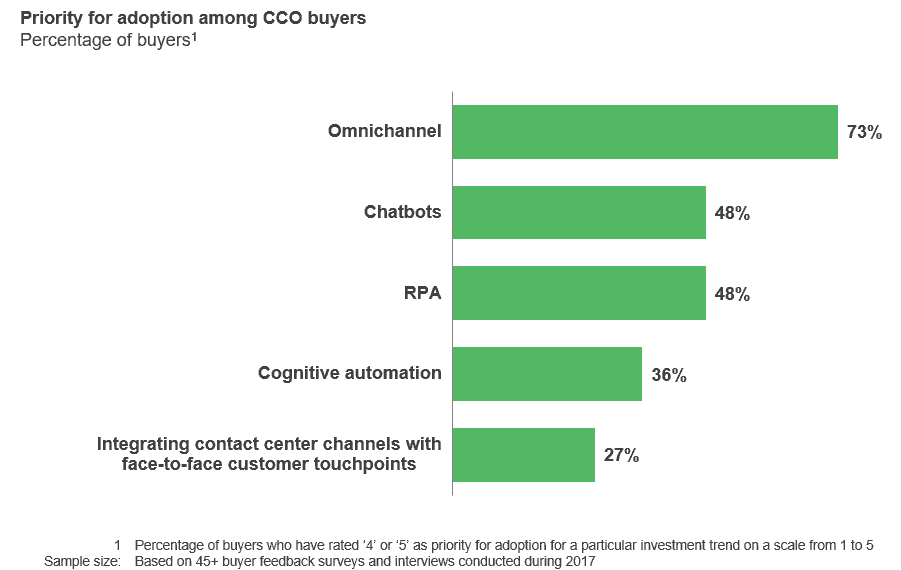Analyst Relations Quarterly Newsletter | Q4 2022
Dear Analyst Relations colleagues –
As we wrap up 2022 and try to get ahead of the curve for 2023, we’re all thinking about what’s to come. And Analyst Relations teams are often in the hot seat of helping their internal stakeholders navigate the strategic decisions for the year ahead. In this issue and for upcoming events, I’ll focus on offering you Everest Group insights and information that will help you and your AR team be ready to respond to those questions.
The first event is our live webinar on Tuesday, December 13, Key Issues 2023: Rise Above Economic Uncertainty and Succeed. Our research leaders will explain why 2023 will see a divergence between the direction of GDP and spending on IT-BPS Services. They will highlight the expected bright spots for our markets and how to position to capitalize on those opportunities. The presentation will include findings from our Key Issues 2023 Survey, helping you hone in on what enterprises are thinking about. Sign up here and join the discussion, including the live Q&A.
Next, on January 12, will be our webinar, Key Themes to Help Analyst Relations Teams Navigate 2023 | An AR-professional Exclusive Webinar. I’ll join colleagues and Everest Group Partners Abhishek Singh and Manu Aggarwal to discuss how AR teams can create meaningful impact for your organizations, given our 2023 predictions and all that’s to come. We’ll also look at which areas of AR investment stand to deliver value, and which should be avoided. Please register here.
As in every quarter, please see below for our Talent Spotlight, recently published thought leadership, our newest PEAK Matrix® Assessments, and a sneak peek at some of the findings to be shared in the Key Issues 2023 webinar.
Wishing you a healthy and fulfilling holiday season!
Best Regards,
Katrina Menzigian
Vice President, Analyst Relations Engagement
Explore our latest published research
Market Vista™: Q3 2022 | Report
Digital Adoption Platforms (DAP) – State of the Market 2023 | Report
A New Paradigm of Marketing Beckons: Marketing Services State of the Market Report 2022 | Report
US Talent Supply Landscape for the Top 10 In-demand Technology Skills | Report
India’s Services Delivery Overview – Tier-1 Hubs Continue to Grow, Tier-2/3 Speeding Up | Report
Explore our recent custom research
Case #1: Everest Group Creates Six-year Strategy Roadmap for the Philippines IT-BP Industry
Explore our informative blogs and infographics
The Role of ESG in IT Services Pricing: Is There a Case for a Green Premium? | Blog
Why Metaverse Growth Will Put Trust and Safety (T&S) Center Stage | Blog
Engineering Services Price Benchmarking Catalog | Market Insights™
No-code Low-code AI | Market Insights™
Talent Spotlight
Hrishi Raj Agarwalla is a Practice Director in Everest Group’s Global Sourcing team. In this role, he assists clients with global services delivery locations and workforce strategy. Hrishi has rich experience across projects covering location selection, delivery portfolio optimization, cost/talent benchmarking, and sourcing strategy. In addition, Hrishi also manages Everest Group’s Market Vista™ membership offering, which includes a suite of quarterly and annual reports that capture the key developments across multiple aspects of the global services industry.
CONNECT WITH HRISHI RAJ ON LINKEDIN
Prashant Shukla, Vice President at Everest Group, leads the Financial Research practice, which includes its Executive Insights™ program for CXOs within IT and business process service provider organizations. In addition, Prashant leads the firm’s proprietary financial analysis of service providers, which provides the foundation for many external and internal research activities and deliverables.
CONNECT WITH PRASHANT ON LINKEDIN
Featured Video
Addressing Global Uncertainty Across Major Economies Related to Pandemic, Recession | 1 of 3
In the first of this three-part video series, watch as Everest Group’s Prashant Shukla, Vice President, Akash Verma, Practice Director, and Mansi Mehta, Analyst, discuss the current uncertainty in business across the major economies of the world. Hear our latest insights on this topic and our methodology to track recent economic trends.
Stay in the Know
Key Issues for 2023: Rise Above Economic Uncertainty and Succeed | Webinar Join Everest Group’s Key Issues 2023 webinar as our experts provide insights into the outlook of the global IT-BP industry and discuss major concerns, expectations, and key trends expected to amplify in 2023.
Key Themes to Help Analyst Relations Teams Navigate 2023 | Webinar
This webinar will prepare AR professionals to influence the thinking of their internal stakeholders on the key trends, dynamics, and likely scenarios to expect in the coming year.
In the News
Leveling Up. Hiring in IT Services Sector Slows after Two-year Record High | In the News
Nitish Mittal, Partner at Everest Group, believes that the market for IT services will decelerate from 10.4% organic constant currency growth in FY22 to 6.7% in FY23 (March ending).
How IT Leaders Can Manage Costs during Inflation and Develop Better Outsourcing Partnerships | In the News
Amy Fong, Partner at Everest Group, says that industry stakeholders can only lower outsourcing costs by appreciating the concern’s existence and developing appropriate strategies to improve flexibility in industrial operations.
How Will the Metaverse Affect the Future of Work? | In the News
The broader adoption of metaverse platforms could increase employee engagement irrespective of where they are. “This will help savvy enterprises attract needed talent without worrying about the physical offices,” said Yugal Joshi, Partner at Everest Group.
IT-BPM Industry Drives Economic Growth | In the News
Quoting from an in-depth study done by Everest Group on the next six years of the BPO (business process outsourcing) sector, IT and Business Process Association of the Philippines (IBPAP) President Jack Madrid gave an optimistic forecast that their industry can grow by 8% annually in the next six years, growing in total revenue from US$29.5 billion in 2021 to almost US$60 billion by 2028.
PEAK Matrix® | Recent Releases
Process Orchestration – Technology Provider Landscape with Products PEAK Matrix® Assessment 2023
SAP Business Application Services PEAK Matrix® Assessment 2023 – Global
Decentralized Clinical Trial Platforms PEAK Matrix® Assessment 2023







